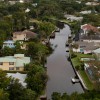 Throughout Florida’s history, humans have altered the coastlines, leading to large-scale degradation of coastal ecosystems. This has led to the loss of associated ecosystem services, including products such as food and timber and processes like coastal protection and disease control. Unfortunately, ecosystem restoration efforts have not always been a priority for coastal management. This 10-page literature review surveys the available ecosystem-service valuation literature for five of Florida’s coastal natural communities–oyster reefs, beach dunes, mangrove forests, seagrass beds, and salt marshes–to facilitate the quantification of ecosystem services to provide a better measure of the full impact of restoration efforts. Written by Susanna Blair, Carrie Adams, Tom Ankersen, Maia McGuire, and David Kaplan, and published by the UF Department of Sea Grant, November 2014. (UF/IFAS photo by Tyler Jones)
Throughout Florida’s history, humans have altered the coastlines, leading to large-scale degradation of coastal ecosystems. This has led to the loss of associated ecosystem services, including products such as food and timber and processes like coastal protection and disease control. Unfortunately, ecosystem restoration efforts have not always been a priority for coastal management. This 10-page literature review surveys the available ecosystem-service valuation literature for five of Florida’s coastal natural communities–oyster reefs, beach dunes, mangrove forests, seagrass beds, and salt marshes–to facilitate the quantification of ecosystem services to provide a better measure of the full impact of restoration efforts. Written by Susanna Blair, Carrie Adams, Tom Ankersen, Maia McGuire, and David Kaplan, and published by the UF Department of Sea Grant, November 2014. (UF/IFAS photo by Tyler Jones)
http://edis.ifas.ufl.edu/sg134
Category: Environment
The Invasion Curve: A Tool for Understanding Invasive Species Management in South Florida
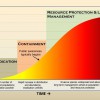 South Florida has more than its share of invasive plants, reptiles, amphibians, fish, mammals, birds, and invertebrates. Nonnative species often spread quickly. Research and monitoring can help managers anticipate which species will cause harm before it is too late to remove them. Identifying where a species is on the invasion curve is the first step to taking management action. The invasion curve shows that eradication of an invasive species becomes less likely and control costs increase as an invasive species spreads over time. Prevention is the most cost-effective solution, followed by eradication. If a species is not detected and removed early, intense and long-term control efforts will be unavoidable. This 4-page fact sheet was written by Rebecca G. Harvey and Frank J. Mazzotti, and published by the UF Department of Wildlife Ecology and Conservation, November 2014.
South Florida has more than its share of invasive plants, reptiles, amphibians, fish, mammals, birds, and invertebrates. Nonnative species often spread quickly. Research and monitoring can help managers anticipate which species will cause harm before it is too late to remove them. Identifying where a species is on the invasion curve is the first step to taking management action. The invasion curve shows that eradication of an invasive species becomes less likely and control costs increase as an invasive species spreads over time. Prevention is the most cost-effective solution, followed by eradication. If a species is not detected and removed early, intense and long-term control efforts will be unavoidable. This 4-page fact sheet was written by Rebecca G. Harvey and Frank J. Mazzotti, and published by the UF Department of Wildlife Ecology and Conservation, November 2014.
http://edis.ifas.ufl.edu/uw392
Wedge-Shaped Beetles (suggested common name) Ripiphorus spp. (Insecta: Coleoptera: Ripiphoridae)
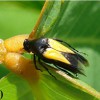 Ripiphoridae are a family of unusual parasitic beetles that are thought to be related to tumbling flower beetles and blister beetles. They parasitize bees and wasps, roaches, and wood-boring beetles, but specific hosts for many ripiphorid species are unknown. Their secretive life cycle makes an assessment of their economic and ecological impact very difficult. Additional research is necessary to determine the abundance and impact of Ripiphorus species. This 4-page fact sheet was written by David Owens, Ashley N. Mortensen, Jeanette Klopchin, William Kern, and Jamie D. Ellis, and published by the UF Department of Entomology and Nematology, December 2014.
Ripiphoridae are a family of unusual parasitic beetles that are thought to be related to tumbling flower beetles and blister beetles. They parasitize bees and wasps, roaches, and wood-boring beetles, but specific hosts for many ripiphorid species are unknown. Their secretive life cycle makes an assessment of their economic and ecological impact very difficult. Additional research is necessary to determine the abundance and impact of Ripiphorus species. This 4-page fact sheet was written by David Owens, Ashley N. Mortensen, Jeanette Klopchin, William Kern, and Jamie D. Ellis, and published by the UF Department of Entomology and Nematology, December 2014.
http://edis.ifas.ufl.edu/in1069
What to do about African Honey Bees: A Consumer Guide
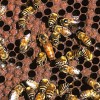 The general public can take several steps to avoid encountering honey bee swarms or colonies. The first and most important step is for citizens to educate themselves and their families about the AHB. This 3-page fact sheet provides links to valuable resources, definitions of key terms, and touches on general precautions and bee-proofing. Written by M. K. O’Malley, J. D. Ellis and A. S. Neal, and published by the UF Department of Entomology and Nematology, October 2014. (Photo: Scott Bauer, USDA/ARS)
The general public can take several steps to avoid encountering honey bee swarms or colonies. The first and most important step is for citizens to educate themselves and their families about the AHB. This 3-page fact sheet provides links to valuable resources, definitions of key terms, and touches on general precautions and bee-proofing. Written by M. K. O’Malley, J. D. Ellis and A. S. Neal, and published by the UF Department of Entomology and Nematology, October 2014. (Photo: Scott Bauer, USDA/ARS)
http://edis.ifas.ufl.edu/in739
How Do I Legally Sell Meat from Alligators, Wild Game, or My Farmed Game or Birds in Florida?
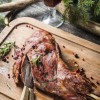 Game meats provide wholesome and nutritious animal protein, but learning the regulations (and which agency has jurisdiction over which regulations) can be burdensome for those who want to be entrepreneurial. This 4-page fact sheet is a “one-stop-shop” for Florida residents who want to sell products from alligators, wild game, or their own farmed game or birds. Written by Chad Carr, Jason Scheffler, Larry Eubanks, Ron Webb, Lee Cornman, Scotland Talley, and Steve Stiegler, and published by the UF Department of Animal Sciences, December 2014. (Photo: iStock/Thinkstock.com)
Game meats provide wholesome and nutritious animal protein, but learning the regulations (and which agency has jurisdiction over which regulations) can be burdensome for those who want to be entrepreneurial. This 4-page fact sheet is a “one-stop-shop” for Florida residents who want to sell products from alligators, wild game, or their own farmed game or birds. Written by Chad Carr, Jason Scheffler, Larry Eubanks, Ron Webb, Lee Cornman, Scotland Talley, and Steve Stiegler, and published by the UF Department of Animal Sciences, December 2014. (Photo: iStock/Thinkstock.com)
http://edis.ifas.ufl.edu/an315
The Florida Natural Resources Leadership Institute
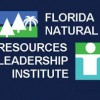 We are all dependent on Florida’s natural resources for jobs, health, and our quality of life. Decisions about the management and conservation of the State’s environment involve complex sets of issues and stakeholders. Expensive and time-consuming disputes often emerge over topics such as endangered species, land use, coastal and marine resources, and water quality and quantity. Effective leadership in managing such issues requires a specialized set of skills, tools, and strategies to build trust and promote innovation and collaboration among competing interests. To meet these needs, the Florida Natural Resources Leadership Institute (NRLI) was founded in 1998 to bring together professionals and stakeholders from diverse natural resource sectors to develop the skills required to engage the public and one another in collaborative decision-making. This 4-page fact sheet was written by Paul Monaghan, Emily Ott, Carol Lippincott, Ondine Wells, Jessica Ireland, Jon Dain, Bruce Delaney, and Roy Carriker, and published by the UF Department of Food and Resource Economics, December 2014.
We are all dependent on Florida’s natural resources for jobs, health, and our quality of life. Decisions about the management and conservation of the State’s environment involve complex sets of issues and stakeholders. Expensive and time-consuming disputes often emerge over topics such as endangered species, land use, coastal and marine resources, and water quality and quantity. Effective leadership in managing such issues requires a specialized set of skills, tools, and strategies to build trust and promote innovation and collaboration among competing interests. To meet these needs, the Florida Natural Resources Leadership Institute (NRLI) was founded in 1998 to bring together professionals and stakeholders from diverse natural resource sectors to develop the skills required to engage the public and one another in collaborative decision-making. This 4-page fact sheet was written by Paul Monaghan, Emily Ott, Carol Lippincott, Ondine Wells, Jessica Ireland, Jon Dain, Bruce Delaney, and Roy Carriker, and published by the UF Department of Food and Resource Economics, December 2014.
http://edis.ifas.ufl.edu/fe667
Frequently Asked Questions about the Africanized Honey Bee in Florida
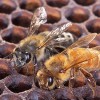 The African honey bee, Apis mellifera scutellata, was introduced into South America from the central and southern part of Africa in 1957. Since its introduction into South America, the African bee has migrated into the southwestern United States and Florida. Apis mellifera scutellata is the African bee subspecies referred to in this 3-page fact sheet, which answers commonly asked questions about these bees and their behavior. Written by M. K. O’Malley, J. D. Ellis and A. S. Neal, and published by the UF Department of Entomology and Nematology, November 2014.
The African honey bee, Apis mellifera scutellata, was introduced into South America from the central and southern part of Africa in 1957. Since its introduction into South America, the African bee has migrated into the southwestern United States and Florida. Apis mellifera scutellata is the African bee subspecies referred to in this 3-page fact sheet, which answers commonly asked questions about these bees and their behavior. Written by M. K. O’Malley, J. D. Ellis and A. S. Neal, and published by the UF Department of Entomology and Nematology, November 2014.
http://edis.ifas.ufl.edu/in738
Picudo de la melaleuca (nombre comun sugerido) Oxyops vitiosa (Pascoe) (Insecta: Coleoptera: Curculionidae)
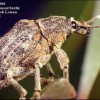 El árbol melaleuca es una planta leñosa invasiva, nativa de Australia, Nueva Guinea, y las Islas Salomón. La melaleuca, conocida también como el árbol de corteza de papel, cajeput, punk tree, o árbol de cepillo blanco, fue introducida en Florida al final del siglo 19 pero aparentemente no se naturalizó hasta el año 1906. La melaleuca fue sembrada extensivamente como un árbol ornamental, y eventualmente invadió los humedales con y sin bosques en el sur de Florida formando monocultivos densos. This 5-page fact sheet is the Spanish language version of Melaleuca Snout Beetle, Melaleuca Weevil (unofficial common names), Oxyops vitiosa (Pascoe) (Insecta: Coleoptera: Curculionidae), written by J.P. Cuda, S.A. Wineriter, G.R. Buckingham, T.D. Center, and K.T. Gioeli, and published by the UF Department of Entomology and Nematology, December 2014.
El árbol melaleuca es una planta leñosa invasiva, nativa de Australia, Nueva Guinea, y las Islas Salomón. La melaleuca, conocida también como el árbol de corteza de papel, cajeput, punk tree, o árbol de cepillo blanco, fue introducida en Florida al final del siglo 19 pero aparentemente no se naturalizó hasta el año 1906. La melaleuca fue sembrada extensivamente como un árbol ornamental, y eventualmente invadió los humedales con y sin bosques en el sur de Florida formando monocultivos densos. This 5-page fact sheet is the Spanish language version of Melaleuca Snout Beetle, Melaleuca Weevil (unofficial common names), Oxyops vitiosa (Pascoe) (Insecta: Coleoptera: Curculionidae), written by J.P. Cuda, S.A. Wineriter, G.R. Buckingham, T.D. Center, and K.T. Gioeli, and published by the UF Department of Entomology and Nematology, December 2014.
http://edis.ifas.ufl.edu/in1020
Economic Value of the Services Provided by Florida Springs and Other Water Bodies: A Summary of Existing Studies
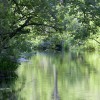 Florida residents and visitors place a high value on aquatic natural resources. This 8-page fact sheet reviews nine studies that demonstrate that Florida’s springs have a very large economic value, both for recreation and resource conservation. In these studies, economists measure the value of ecosystem services in dollar terms to assist management decisions concerning natural resources. Willingness to pay studies show that people who benefit from Florida springs place a high value on them. Economic contribution studies show that Florida springs play a significant role in local and state economic health and job creation. Written by Sara Wynn, Tatiana Borisova, and Alan Hodges, and published by the UF Department of Food and Resource Economics, November 2014. (UF/IFAS Photo by Tyler Jones.)
Florida residents and visitors place a high value on aquatic natural resources. This 8-page fact sheet reviews nine studies that demonstrate that Florida’s springs have a very large economic value, both for recreation and resource conservation. In these studies, economists measure the value of ecosystem services in dollar terms to assist management decisions concerning natural resources. Willingness to pay studies show that people who benefit from Florida springs place a high value on them. Economic contribution studies show that Florida springs play a significant role in local and state economic health and job creation. Written by Sara Wynn, Tatiana Borisova, and Alan Hodges, and published by the UF Department of Food and Resource Economics, November 2014. (UF/IFAS Photo by Tyler Jones.)
http://edis.ifas.ufl.edu/fe959
Tropilaelaps mite Tropilaelaps spp. Delfinado & Baker (Arachnida: Mesostigmata: Laelapidae)
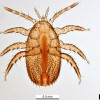 Honey bees throughout the world are exposed to numerous pests, parasites, and pathogens. One such parasite is Tropilaelaps spp. Delfinado & Baker, an ectoparasitic mite that feeds on the hemolymph of developing honey bees. Four species of Tropilaelaps have been identified and characterized. This 4-page fact sheet was written by Ashley N. Mortensen, Sarah Burleson, Gunasegaran Chelliah, Ken Johnson, Daniel R. Schmehl, and Jamie D. Ellis, and published by the UF Department of Entomology and Nematology, October 2014. (Photo credit: Pest and Diseases Image Library, Bugwood.org)
Honey bees throughout the world are exposed to numerous pests, parasites, and pathogens. One such parasite is Tropilaelaps spp. Delfinado & Baker, an ectoparasitic mite that feeds on the hemolymph of developing honey bees. Four species of Tropilaelaps have been identified and characterized. This 4-page fact sheet was written by Ashley N. Mortensen, Sarah Burleson, Gunasegaran Chelliah, Ken Johnson, Daniel R. Schmehl, and Jamie D. Ellis, and published by the UF Department of Entomology and Nematology, October 2014. (Photo credit: Pest and Diseases Image Library, Bugwood.org)
http://edis.ifas.ufl.edu/in1061
Maps of Charlotte County General Permit Trafficshed Channels and Secondary Channels
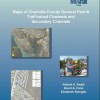 This 33-page collection of maps depicts channels included in the Charlotte County General Permit (GP)1. Each map shows either channel segments within a GP trafficshed or segments in a GP secondary channel system. Written by Robert A. Swett, David A. Fann, and Elizabeth Staugler, and published on EDIS by Florida Sea Grant, October 2014.
This 33-page collection of maps depicts channels included in the Charlotte County General Permit (GP)1. Each map shows either channel segments within a GP trafficshed or segments in a GP secondary channel system. Written by Robert A. Swett, David A. Fann, and Elizabeth Staugler, and published on EDIS by Florida Sea Grant, October 2014.
http://edis.ifas.ufl.edu/sg133
Controlled-Release and Slow-Release Fertilizers as Nutrient Management Tools
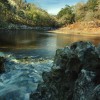 There are many fertilizer sources available for commercial crop production. The characteristics of each fertilizer type determine whether its use poses an advantage or a disadvantage to a farmer. This 6-page fact sheet focuses on how to select the right fertilizer to enhance profitability and satisfy best management practices (BMPs). Written by Guodong Liu, Lincoln Zotarelli, Yuncong Li, David Dinkins, Qingren Wang, and Monica Ozores-Hampton, and published by the UF Department of Horticultural Sciences, October 2014. (UF/IFAS Photo by Thomas Wright)
There are many fertilizer sources available for commercial crop production. The characteristics of each fertilizer type determine whether its use poses an advantage or a disadvantage to a farmer. This 6-page fact sheet focuses on how to select the right fertilizer to enhance profitability and satisfy best management practices (BMPs). Written by Guodong Liu, Lincoln Zotarelli, Yuncong Li, David Dinkins, Qingren Wang, and Monica Ozores-Hampton, and published by the UF Department of Horticultural Sciences, October 2014. (UF/IFAS Photo by Thomas Wright)
http://edis.ifas.ufl.edu/hs1255
Aquatic and Marine Ecosystems curriculum
 The new Florida 4-H Aquatic and Marine Ecosystems: Leader’s Activity Guide helps leaders address the 4-H Science Initiative and is part of the Environmental Sciences Framework, OUR NATURAL WORLD. This framework includes the basic premise that aquatic/marine environments are important in children’s lives, particularly to those children in Florida. The 4-H Aquatic and Marine Ecosystems curriculum provides an opportunity for young people to practice a variety of life skills while learning marine science concepts. The curriculum also utilizes science inquiry as a way for young people (9-14) to gain a deeper curiosity about the natural world. Written by Karen Blyler and Joy Jordan, and published by the UF Department of 4-H Youth Development, November 2014.
The new Florida 4-H Aquatic and Marine Ecosystems: Leader’s Activity Guide helps leaders address the 4-H Science Initiative and is part of the Environmental Sciences Framework, OUR NATURAL WORLD. This framework includes the basic premise that aquatic/marine environments are important in children’s lives, particularly to those children in Florida. The 4-H Aquatic and Marine Ecosystems curriculum provides an opportunity for young people to practice a variety of life skills while learning marine science concepts. The curriculum also utilizes science inquiry as a way for young people (9-14) to gain a deeper curiosity about the natural world. Written by Karen Blyler and Joy Jordan, and published by the UF Department of 4-H Youth Development, November 2014.
- Introduction
- Lesson 1: Aquatic and Marine Ecosystem Connections
- Lesson 2: Wetland Ecosystems: Freshwater Marshes and Swamps
- Lesson 3: Aquatic Ecosystems: Lakes, Springs, and Rivers
- Lesson 4: Coastal Ecosystems: Beach, Estuary, Marsh, and Swamp
- Lesson 5: Marine Ecosystems: Coral Reefs and Open Ocean
- Appendices: Glossary and Additional Resources
- Facilitator Evaluation
Fins & Scales: An Introduction to Bony Fish : A Marine Science Project Guide for 4-H Leaders and Educators
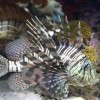 The Fins and Scales Project is intended for youth age 11-13 (Intermediate 4-Hers). The Leaders Guide follows the layout of the Youth Project Book and provides a suggested approach for each section. Each section of the Leaders Guide contains: Additional background information, answer key, additional activities, opportunities to review, “dive deeper,” and “think like a scientist.” This 52-page project guide was written by Karen Blyler, and published by the UF Department of 4-H Youth Development, October 2014.
The Fins and Scales Project is intended for youth age 11-13 (Intermediate 4-Hers). The Leaders Guide follows the layout of the Youth Project Book and provides a suggested approach for each section. Each section of the Leaders Guide contains: Additional background information, answer key, additional activities, opportunities to review, “dive deeper,” and “think like a scientist.” This 52-page project guide was written by Karen Blyler, and published by the UF Department of 4-H Youth Development, October 2014.
http://edis.ifas.ufl.edu/4h355
Fins & Scales: An Introduction to Bony Fish : A Marine Science Project Book for 4-H Intermediate Members
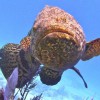 In this project youth will learn about fish and their adaptations for living in water. This 48-page Intermediate level (ages 11-13) project book was written by Karen Blyler, and published by the UF Department of 4-H Youth Development, October 2014.
In this project youth will learn about fish and their adaptations for living in water. This 48-page Intermediate level (ages 11-13) project book was written by Karen Blyler, and published by the UF Department of 4-H Youth Development, October 2014.
Contents: A. What is a fish? B. How do fins help a fish? C. How does body shape help a fish? D. How does body color help a fish? E. Why do fish have different mouths? F. Why do fish have scales? G. How can we determine a fish’s age?
http://edis.ifas.ufl.edu/4h354
Conflicts between People and the Florida Black Bear
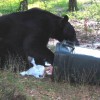 An adult black bear may eat up to the equivalent calorie content of 38 Big Mac sandwiches a day, and can smell food from one to two miles away. Garbage is the main attractant, but bears are also attracted by bee hives, pet food, barbeque grills, fruit trees, and bird (or wildlife) feeders. Conflicts between people and black bears arise when people fail to remove or secure potential food sources. In their search for food, black bears may damage property and threaten, injure, or kill pets and livestock in order to gain access to their feed. This 5-page fact sheet provides tips for preventing human-bear conflicts and tells how to report conflicts if they happen. Written by Elizabeth F. Pienaar, and published by the UF Department of Wildlife Ecology and Conservation, September 2014.
An adult black bear may eat up to the equivalent calorie content of 38 Big Mac sandwiches a day, and can smell food from one to two miles away. Garbage is the main attractant, but bears are also attracted by bee hives, pet food, barbeque grills, fruit trees, and bird (or wildlife) feeders. Conflicts between people and black bears arise when people fail to remove or secure potential food sources. In their search for food, black bears may damage property and threaten, injure, or kill pets and livestock in order to gain access to their feed. This 5-page fact sheet provides tips for preventing human-bear conflicts and tells how to report conflicts if they happen. Written by Elizabeth F. Pienaar, and published by the UF Department of Wildlife Ecology and Conservation, September 2014.
http://edis.ifas.ufl.edu/uw389
Floridians' Perceptions of Invasive Species
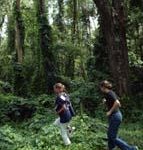 Invasive species are a serious threat in Florida. Invasive species are defined as non-native or exotic organisms, which cause ecological or economic harm or negatively affect human health in a new environment where they are not historically found. This 5-page fact sheet summarizes Florida residents’ perceptions, concerns, and knowledge about invasive species. This information will equip Extension faculty to more effectively communicate and educate clientele on this topic. Written by Nicole M. W. Dodds, Mary Hannah Miller, and Alexa J. Lamm, and published by the UF Department of Agricultural Education and Communication, October 2014.
Invasive species are a serious threat in Florida. Invasive species are defined as non-native or exotic organisms, which cause ecological or economic harm or negatively affect human health in a new environment where they are not historically found. This 5-page fact sheet summarizes Florida residents’ perceptions, concerns, and knowledge about invasive species. This information will equip Extension faculty to more effectively communicate and educate clientele on this topic. Written by Nicole M. W. Dodds, Mary Hannah Miller, and Alexa J. Lamm, and published by the UF Department of Agricultural Education and Communication, October 2014.
http://edis.ifas.ufl.edu/wc186
Floridians' Perceptions of Endangered Species
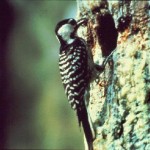 In July 2014, the UF/IFAS Center for Public Issues Education in Agriculture and Natural Resources (PIE Center) initiated a study to explore the attitudes, perceptions, opinions, and knowledge of Floridians on endangered and invasive species. The majority of respondents to the survey have favorable views of endangered species but few consider themselves knowledgeable on the issue. This 4-page fact sheet can equip Extension faculty to more effectively communicate with and educate clientele about endangered species. Written by Mary Hannah Miller, Nicole M.W. Dodds, & Alexa J. Lamm, and published by the UF Department of Agricultural Education and Communication, October 2014.
In July 2014, the UF/IFAS Center for Public Issues Education in Agriculture and Natural Resources (PIE Center) initiated a study to explore the attitudes, perceptions, opinions, and knowledge of Floridians on endangered and invasive species. The majority of respondents to the survey have favorable views of endangered species but few consider themselves knowledgeable on the issue. This 4-page fact sheet can equip Extension faculty to more effectively communicate with and educate clientele about endangered species. Written by Mary Hannah Miller, Nicole M.W. Dodds, & Alexa J. Lamm, and published by the UF Department of Agricultural Education and Communication, October 2014.
http://edis.ifas.ufl.edu/wc185
Imperial Moth Eacles imperialis imperialis (Drury, 1773) (Insecta: Lepidoptera: Saturniidae: Ceratocampinae)
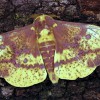 The imperial moth is one of our largest and most beautiful moths. It is also the most variable in appearance and the most widely distributed of our large eastern U.S. saturniid moths. This 9-page fact sheet was written by Donald W. Hall, and published by the UF Department of Entomology and Nematology, September 2014.
The imperial moth is one of our largest and most beautiful moths. It is also the most variable in appearance and the most widely distributed of our large eastern U.S. saturniid moths. This 9-page fact sheet was written by Donald W. Hall, and published by the UF Department of Entomology and Nematology, September 2014.
(Photo: Donald W. Hall, University of Florida) http://edis.ifas.ufl.edu/in1051
African malaria mosquito Anopheles gambiae Giles (Insecta: Diptera: Culicidae)
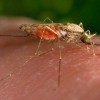 Anopheles gambiae Giles is commonly called the African malaria mosquito because it is the most efficient vector of human malaria in the Afrotropical Region. They are considered to be one of the world’s most important human malaria vectors because of their susceptibility to the Plasmodium parasite, their preference for humans as a host, and their indoor-feeding behavior. Due to their short development time and their preference for developmental habitats near human dwellings, Anopheles gambiae are considered effective vectors of human malaria, as well as lymphatic filariasis (elephantiasis). This 6-page fact sheet was written by Sabrina A. White and Phillip E. Kaufman, and published by the UF Department of Entomology and Nematology, September 2014.
Anopheles gambiae Giles is commonly called the African malaria mosquito because it is the most efficient vector of human malaria in the Afrotropical Region. They are considered to be one of the world’s most important human malaria vectors because of their susceptibility to the Plasmodium parasite, their preference for humans as a host, and their indoor-feeding behavior. Due to their short development time and their preference for developmental habitats near human dwellings, Anopheles gambiae are considered effective vectors of human malaria, as well as lymphatic filariasis (elephantiasis). This 6-page fact sheet was written by Sabrina A. White and Phillip E. Kaufman, and published by the UF Department of Entomology and Nematology, September 2014.
http://edis.ifas.ufl.edu/in1048